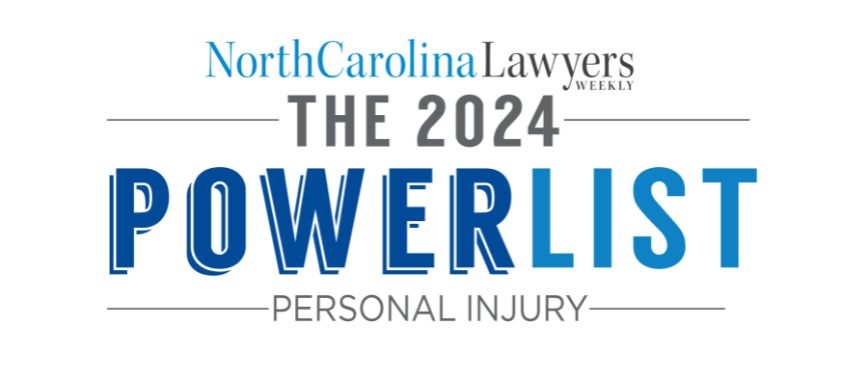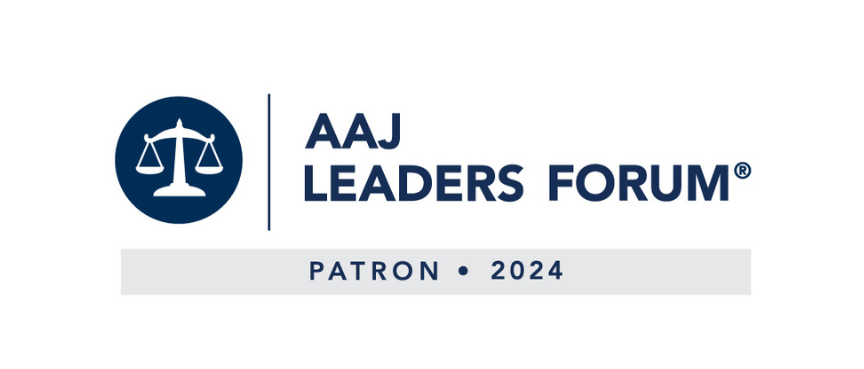Psychopharmacology is the study of the control and change of behavior through the use of medications. There has been tremendous growth in the development and use of psychotropic drugs over the last twenty to thirty years. Psychotropic drugs are medications that act upon the mind thereby altering behavior, emotion or other mental functions.
Most survivors of traumatic brain injury will be treated with some type of psychotropic medication during the course of their recovery. Many patients with acquired brain injuries will only require such medications during the acute phase of recovery. Other survivors will require psychotropic medications for long periods of time or possibly even the remainder of their lives.
This paper will review the most common medications used in the treatment of patients with acquired brain injury.
Neurobehavioral Consequences of Traumatic Brain Injury
The physical, emotional, behavioral and cognitive consequences of traumatic brain injury are well documented in the medical literature. The medical and legal communities are finally recognizing that even “mild” brain injury may result in a significant disruption of normal mental functioning eventually leading to long term disability for the injured individual.
Cognitive deficits following brain injury may include difficulties with concentration, attention, perception, memory and the ability to process new information. Speech and language may be compromised. Emotional and behavioral symptoms include disinhibition, extreme mood swings (emotional lability), depression, irritability, quickness to anger and inappropriate affect. Physical symptoms include loss of muscle tone, strength, and coordination (spasticity). Headache and dizziness are among the most common patient complaints following mild brain injury. Many individuals with traumatic brain injuries experience disruption of their sleep cycle, causing them to awaken frequently in the night or to develop insomnia. This may lead to daytime somnolence or low arousal. Acquired brain injury may also cause the development of seizures or “spells.” Fortunately, many of the symptoms caused by traumatic brain injury can be lessened or controlled by the use of appropriate medications.
Common Medications
There is a wide range of medications used in the treatment of patients with acquired brain injury. Medication may be prescribed to treat specific neurological symptoms such as headache, post-traumatic epilepsy or spasticity. Other agents may be used to correct cognitive deficits in attention, memory and executive function. Still, others may be used to treat depression or emotional lability. Unfortunately, many of these medications may have unwelcome consequences. Impaired memory and motor performance may result from the use of some medications for seizures, depression or anxiety. Depression may be one adverse effect caused by the use of drugs to control spasticity.
Depression is one post-concussive symptom that may respond well to drug therapy. Psychotropic medications used in the treatment of post-concussive syndrome fall into several major classifications or groups. Among the most common groups are tricyclic and tetracyclic antidepressants (TCAs), selective serotonin reuptake inhibitors (SSRIs), monoamine oxidase inhibitors (MAOIs) and benzodiazepines (BZs).
Among the earliest medications used in the treatment of brain injury were the tricyclic antidepressants. TCAs include imipramine, amitriptyline (Elavil), doxepin (Sinequan) and nortriptyline. As the name implies they are typically prescribed for the treatment of depression although they may also be beneficial in the treatment of panic disorders, including agoraphobia. The known side effects of these medications include sedation, dry mouth, reduced tear flow, and weight gain.
SSRIs include fluoxetine (Prozac), paroxetine (Paxil), venlafaxine (Effexor) and sertraline (Zoloft). SSRIs are primarily used in the treatment of depression. The effectiveness of MAOI’s as antidepressants was first established in the late 1950s. Medications in this class include phenelzine (Nardil) and deprenyl (Eldepryl).
BZs include alprazolam (Xanax), lorazepam (Ativan) and diazepam (Valium). The first BZ was patented in 1959 and marketed as Librium. Valium was introduced in 1963. These medications are often used in the treatment of anxiety disorders or anxiety associated with depressive symptoms. Xanax is also used in the treatment of panic attacks.
The following is a summary of the agents most commonly used in the treatment of patients following traumatic brain injury:
1. Anti-Spasticity Agents
- Dantrium: Dantrium works by blocking the release of calcium from the sarcoplasmic reticulum, inhibiting muscle contraction. Its effects are peripheral, and as such, it exhibits little in the way of cognitive side effects. It is considered the drug of choice for the treatment of spasticity resulting from the cerebral injury. The most common side effects are gastrointestinal. There is a very small incident of irreversible liver damage with the use of this medication. It is most common in female patients over 40 receiving more than 200 mg per day.
- Baclofen: Baclofen works at the level of the spinal cord. It is used more commonly in the treatment of spasticity resulting from spinal cord injury. It is not used commonly in traumatic brain injury because it does tend to have sedating effects. Abrupt withdrawal of this medication could result in seizures.
- Valium: Valium, which is commonly used in anxiety disorders, is a potent anti-spasticity medication. However, as is the case with Baclofen it is generally avoided in brain injury if possible because of the cognitive side effects.
- Peripheral nerve blocks: Phenol, a special type of alcohol can be injected directly into peripheral nerves, resulting in decreased spasticity. This procedure is generally well tolerated. There is a risk of infection, although this is quite small. If a mixed nerve is blocked, (ie. a nerve with both sensory and motor components), significant parasthesias may result.
- Botulinum toxin injections: Botulinum toxin, the offending agent in the disease botulism, can be injected directly into spastic muscles. This blocks muscle contraction and seems to be effective in the treatment of spasticity, although it is not FDA approved for this purpose.
2. Attentional Agents
In general, stimulants are used to treat the attention deficit present after traumatic brain injury. The primary side effects of stimulants are nervousness, anxiety, restlessness, etc. On occasion, patients may become psychotic as a result of treatment with these agents. There is an ongoing debate about whether these agents lower the seizure threshold.
- Ritalin: Ritalin is a direct agonist of the dopamine system. Many people are familiar with this medication because of the publicity it has received for the treatment of Attention Deficit Disorder in children. Ritalin is a psychostimulant, chemically related to amphetamines. It has the advantage of exhibiting a short half-life. Therefore it has a very rapid onset of action and also washes out of a patient’s system quickly. It has a relative disadvantage that it needs to be dosed frequently. In addition, Ritalin has some value on the “street market” and has the potential for abuse. It is generally safe and well-tolerated.
- Amantadine: Amantadine is also a dopamine agonist. It probably exerts its effect by encouraging the release of endogenous dopamine from the presynaptic terminal. Additionally, it may have some direct effect on postsynaptic receptors. Because of its dopaminergic effect, Amantadine is useful as an attentional agent. It has also been used widely in the elderly for influenza A prophylaxis. In addition, it has been used effectively as part of the treatment of Parkinson’s disease.
- Bromocriptine: Bromocriptine is a direct dopamine agonist. There is no literature to directly support its use as a stimulant in brain injury. However, it is widely used clinically, particularly in lower-level patients. It may also have an effect on the treatment of central fevers and dysautonomia. There has been some recent literature to suggest a role in the treatment of expressive aphasia.
3. Seizure Medications
The overall incidence of post-traumatic epilepsy is approximately 5%. There is little role for the use of prophylactic seizure medication (ie. treatment with seizure medications to prevent the development of epilepsy), beyond the first week of the injury. Some seizure medications may also exhibit behavioral effects. They may be particularly useful in patients with lower frustration tolerance, episodic dyscontrol syndrome or temporal lobe epilepsy.
- Carbamazepine (Tegretol): Tegretol has proven to be an effective anticonvulsant in those patients suffering from seizures. Monitoring of blood levels and liver function is important as the drug has the potential to cause liver damage in some patients. It may also be used in the treatment of trigeminal neuralgia.
- Valproic Acid: Valproic acid is used in the treatment of simple and complex absence seizures. A simple absence seizure is a very brief loss of consciousness or clouding of the sensorium.
4. Medications To Control Agitation/Restlessness/Anxiety
Post-traumatic agitation and restlessness are common and are related to the patient’s degree of post-traumatic amnesia. True post-traumatic agitation is usually time-limited and resolves within two to four weeks of the injury. Individuals may experience longer-term difficulty with behavioral control as well.
- Inderal: Inderal is a beta-blocker used commonly for the treatment of high blood pressure. It appears to decrease the intensity of agitated behaviors, although it may not affect the frequency of behavioral outbursts. The mechanism of its behavioral effect is unclear. Inderal crosses the blood-brain barrier and may have a central effect. Alternatively, it could work by blocking the peripheral effects of agitation such as sweating, tachycardia (increased heart rate) and tachypnea (increased respiratory rate).
- Anti-depressant medications: There are a variety of anti-depressant medications that affect the serotonergic and epinephrinergic neurotransmitter systems. Depending on the agents selected, they may exhibit a stimulatory or a sedating effect. Sedating anti-depressants may be useful in improving agitation. Conversely, stimulating anti-depressants may be useful in controlling the behavior. In addition, sedating anti-depressants are sometimes used to encourage a normal sleep-wake cycle, which also helps to improve behavior.
- Benzodiazepines: (Valium, Ativan). This class of medications has a profound effect on anxiety, restlessness, and agitation. However, they are quite sedating and usually avoided if possible.
- Major Tranquilizers: (Haldol, Thorazine, Mellaril) These agents work by blocking dopamine in the central nervous system. As brain injury is a disease associated with lowered neurotransmitter levels, there are theoretical reasons why these agents should be avoided. In addition, there is a wide body of animal evidence to suggest that these agents may slow motor recovery following an injury.
- The use of major tranquilizers is sometimes necessary but generally avoided if possible.
The Attorney’s Role
There are several things that the attorney can do to assist a client who is being managed with psychotropic drugs. The first is to assist the client in locating a qualified physician to manage their pharmacologic care. Physician experience in the treatment of TBI is crucial. “It is not one’s professional credentials that speak to experts in the area of diagnosis and treatment–it is the special study one has made of traumatic brain injury. The most important instrument for the diagnosis of neurobehavioral sequelae of TBI is a physician or a psychologist with experience in TBI. The most effective therapeutic agent is a professional who understands the nature of the problem.”1
Because of the tremendous variance in the symptomatology of patients with brain injuries and the differences in the way anyone patient may react to a medication, there is no generally accepted pharmacologic treatment plan for TBI patients. A certain amount of trial and error will be required to find the medications most beneficial for any particular patient. A physician with experience in the treatment of TBI is more likely to find the most appropriate medications with the least amount of trial and error. Physiatrists and neuropsychiatrists are good candidates for the task of pharmacologic management. The names of physicians with experience in this area can be obtained from a local rehabilitation facility that treats patients with TBI or the Directory of Head Injury Rehabilitation Services, published by the National Brain Injury Association.
The second thing the attorney can do to assist a client who requires long term medication management is to become familiar with the medications the client is taking, particularly with the long term side effects. Some of these medications may have unpleasant side effects, such as dry mouth, sweating or weight change. Other medications adversely affect cognitive functioning. Severe reactions may occur in some patient populations. The client may be entitled to significant compensation for the discomfort associated with these long term side effects. A list of current medications, their costs, side effects and probable length of time the client will be required to take them should be included in the settlement brochure.
The most important function of the attorney is to ensure adequate funding for the client’s future pharmacological treatment. Many of these medications can be quite expensive. Some require regular physician visits together with blood monitoring to ensure proper dosage levels. Many clients will require multiple medications. It is not unusual for the total costs associated with the medications to exceed $400-500 per month. Obtaining a well thought out and carefully prepared life care plan before the client’s claim is resolved is essential. Consideration must be given to the likelihood that new medicines will be developed for the treatment of brain injury in the future. If past experience is any guide, those new medications will be expensive. An allowance for the cost of future pharmacological treatment should be contemplated in a structured settlement for any brain-injured individual.
Many times there is simply not enough insurance coverage to fully compensate the Plaintiff or even to pay the costs of necessary medical care. If the client is currently eligible for government benefits, such as Medicaid, which will pay for medications, care should be taken to preserve the client’s eligibility for those benefits. A Supplemental Care Trust as authorized by 42 U.S.C. §1369p should be considered in these situations.
Conclusion
As more and more research is conducted our understanding of how trauma affects the brain will continue to expand. Research over the past thirty years has led to the development of many new psychotropic drugs that have proven useful in the treatment of the cognitive, behavioral and physical sequelae of traumatic brain injury. This trend is likely to continue and even accelerate in the future. It is important that the trial attorney representing those individuals with acquired brain injury have a basic understanding of how those medications affect their client and the financial costs of the long term pharmacologic management of the brain-injured individual.
By:
James T. McDeavitt, M.D.,Medical Director Charlotte Institute of Rehabilitation
and
Charles G. Monnett III, Esq.,Charles G. Monnett III & Associates
Selected Bibliography
C. Thomas Gualtieri, M.D., Neuropsychiatry and Behavioral Pharmacology, Springer-Verlag, New York, 1991.
Alan F. Schatzberg, M.D., Charles B. Nemeroff, M.D., Ph.D., Textbook of Psychopharmacology, American Psychiatric Press, 1995.Physicians’ Desk Reference, 50th Edition, Medical Economics Company, Montvale, NJ, 1996





